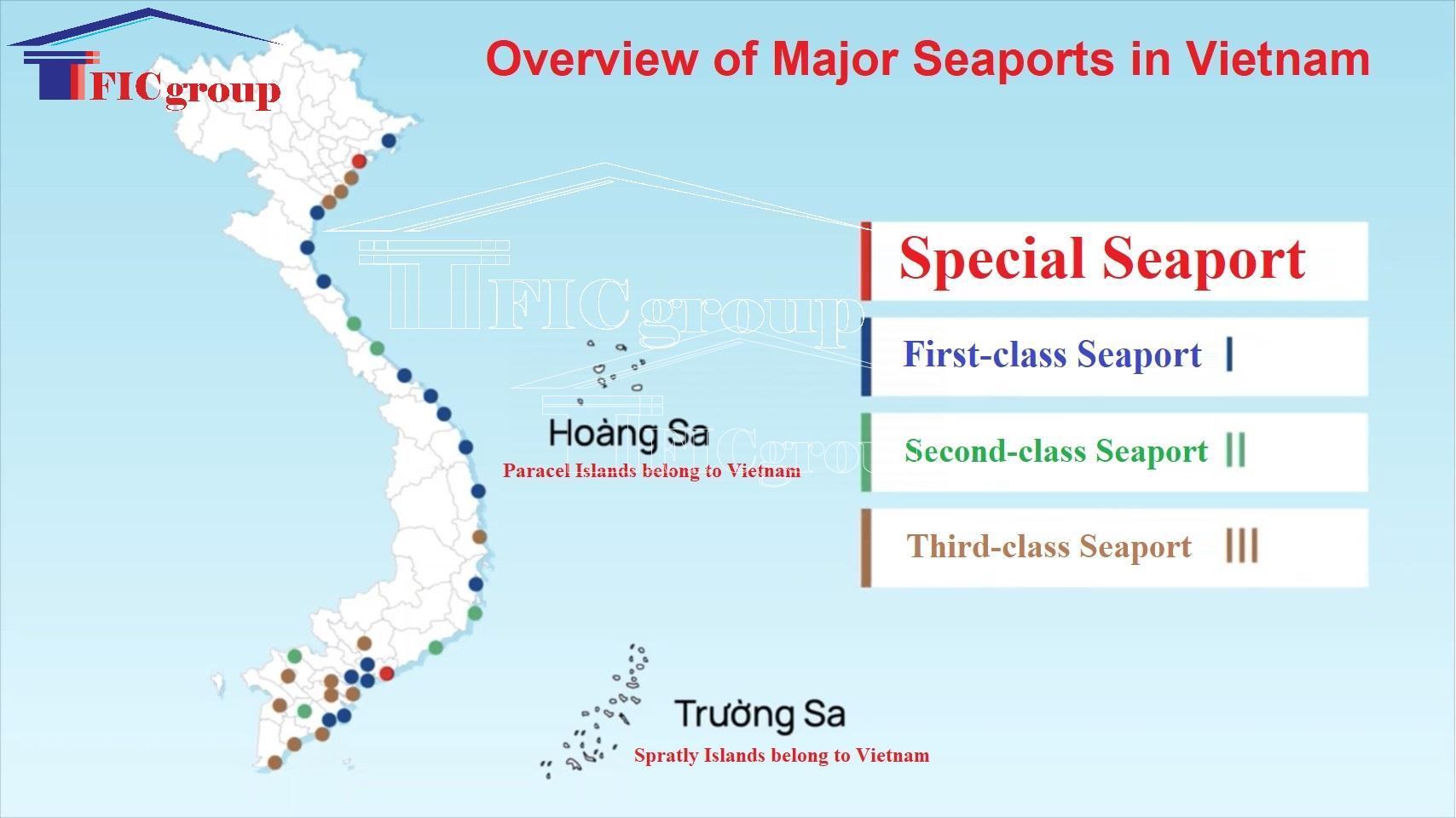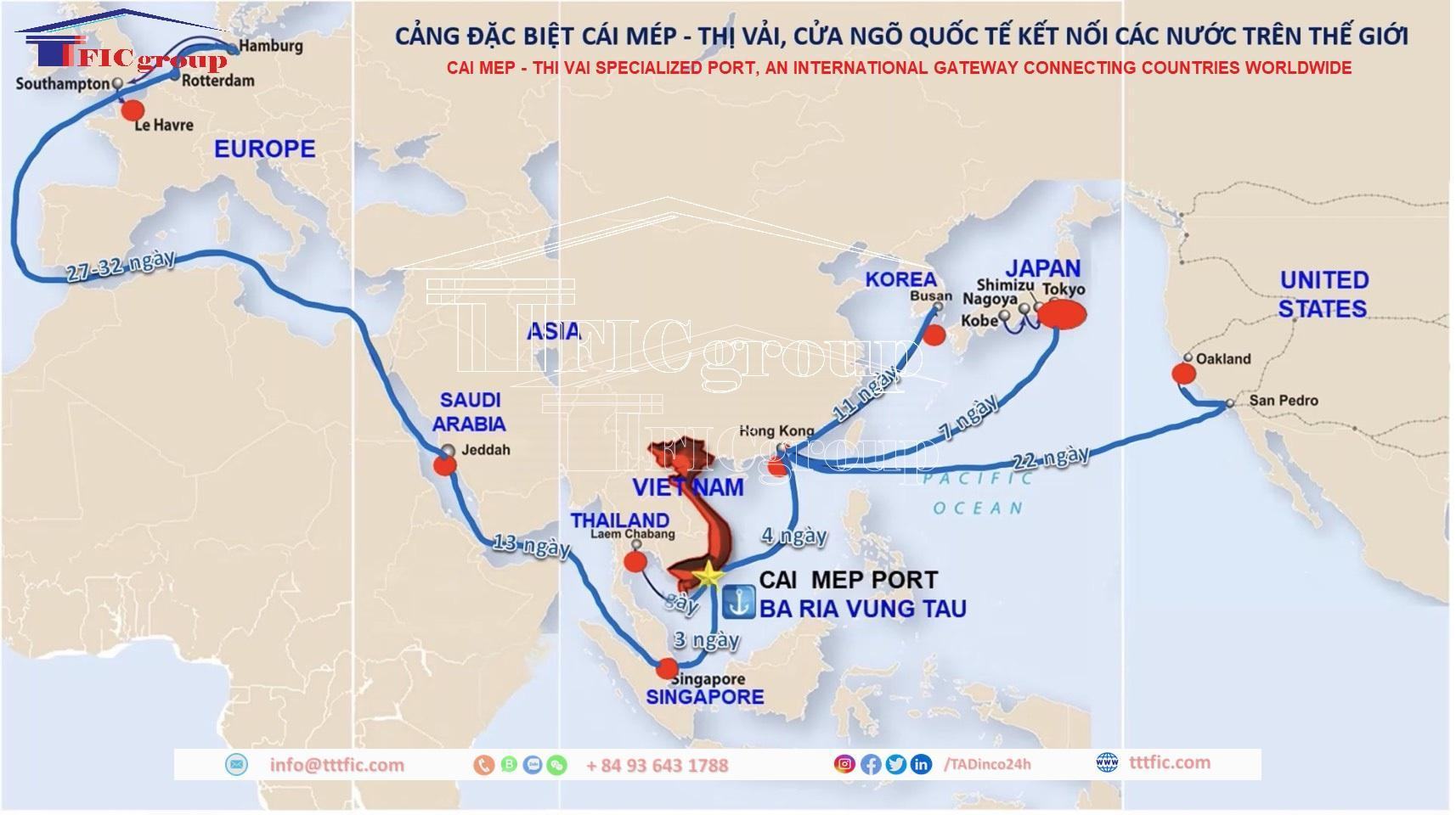
Vietnam, a captivating country in Southeast Asia, is known for its rich cultural heritage and breathtaking landscapes. It is also home to several major seaports and industrial zones that play a crucial role in the country’s economic development and international trade. These seaports serve as gateways for both imports and exports, connecting Vietnam to various destinations around the world. In this overview, we will explore some prominent seaports in Vietnam and highlight their significance and contributions to the Vietnamese maritime industry.

Vietnam boasts a diverse range of seaports that contribute significantly to the nation’s maritime industry and economic growth. These seaports, such as the Port of Ho Chi Minh City, Port of Hai Phong, Port of Da Nang, and Cai Mep-Thi Vai Port Complex, along with the Port of Long An, collectively enhance Vietnam’s position as a key player in the global supply chain and facilitate international trade connections.
Vietnam’s major seaports, including the Port of Ho Chi Minh City, Port of Hai Phong, Port of Da Nang, Cai Mep-Thi Vai Port Complex, and the Port of Long An, are integral to the nation’s economic development and global trade networks. These seaports not only facilitate the movement of goods but also contribute to regional development, attracting investments, and promoting tourism. As Vietnam continues to strengthen its position in the global economy, its seaports will remain vital component of its thriving maritime industry.

I. Special Port: Cai Mep Thi Vai, the International Gateway Connecting Countries Worldwide
Cai Mep Thi Vai Port, located in Vietnam, is a remarkable seaport serving as a crucial international gateway connecting nations across the globe. Situated in the southern region of the country, this port holds immense significance in facilitating global trade and commerce. Cai Mep Thi Vai Port boasts state-of-the-art infrastructure, advanced facilities, and efficient logistics services, making it a preferred choice for international shipping and maritime activities. With its strategic location and world-class operations, this port plays a pivotal role in promoting Vietnam’s economic growth and enhancing its position in the global trade network.
II. Type 1 Port:
Type 1 Ports in Vietnam are characterized by their excellent infrastructure, capacity, and capabilities to handle a wide range of cargo. These ports have advanced handling equipment, efficient logistics systems, and streamlined processes, ensuring smooth and swift operations. With their modern facilities and reliable services, Type 1 Ports contribute significantly to the country’s import and export activities, serving as important hubs for international trade.
III. Type 2 Port:
Type 2 Ports in Vietnam are integral components of the country’s maritime network, catering to both domestic and international shipping needs. These ports possess adequate infrastructure and facilities to handle a diverse range of goods and commodities. While they may have slightly lower capacity compared to Type 1 Ports, Type 2 Ports still play a crucial role in facilitating trade and promoting economic development in their respective regions. These ports provide essential connectivity and support to various industries, ensuring efficient transportation and logistics operations.
IV. Type 3 Port:
Type 3 Ports in Vietnam serve as key regional hubs, facilitating maritime trade within specific areas and contributing to the local economy. Although they may have limited capacity compared to Type 1 and Type 2 Ports, Type 3 Ports play a vital role in promoting regional development and connecting smaller businesses to the global market. These ports provide essential services and infrastructure to support the transportation of goods and commodities, ensuring the smooth flow of trade and commerce.
Vietnam’s major seaports, including the Special Port of Cai Mep Thi Vai, Type 1 Ports, Type 2 Ports, and Type 3 Ports, form a robust network that supports the country’s economic growth, enhances international trade, and strengthens its position in the global maritime industry.
These seaports not only facilitate the movement of goods but also serve as gateways to explore the country’s diverse culture and natural wonders. As Vietnam continues to thrive as an emerging market, its seaports will play an increasingly vital role in shaping its future as a dynamic player in the global maritime industry.
Table of contents



